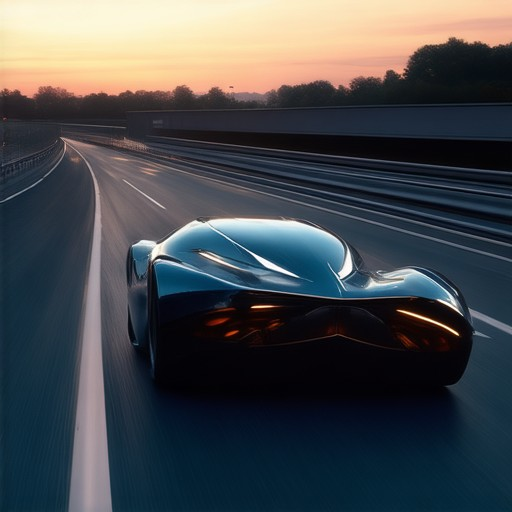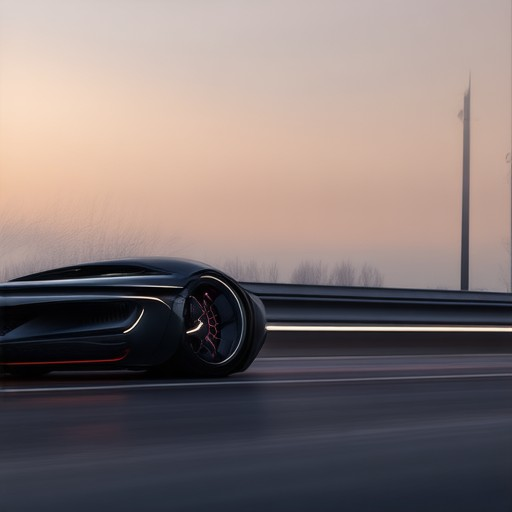When it comes to enhancing your vehicle’s appearance and performance, few modifications are as impactful as switching out its wheels. Among the most popular options are low-profile wheels, hubcaps, and rims. While these components serve different purposes, the debate rages on: Are low-profile wheels truly superior, or do traditional hubcaps and rims hold the edge? In this article, we’ll dive deep into the differences, exploring everything from performance and style to cost and durability. By examining the unique characteristics of each option, we aim to help you determine which choice aligns best with your needs and preferences. Whether you’re looking to improve safety, enhance aesthetics, or maximize efficiency, this guide will provide the insights you need to make an informed decision.
Key Takeaways
- Improve manoeuvrability and responsiveness with their narrower diameter.
- Feature a sleek, aerodynamic design that combines functionality with style.
- Enhance performance by reducing aerodynamic drag and improving speed and efficiency.
- Offer a stylish, sporty appearance that’s easy to customize.
- Compete with various brands offering diverse designs for different vehicles.

What Are the Key Differences Between Low-Profile Wheels and Other Types of Wheels Like Hubcaps or Rims?
Low-profile wheels are a popular choice among car enthusiasts due to their unique design and performance benefits. While they share similarities with other types of wheels like hubcaps and rims, they have distinct features that set them apart. Below is a breakdown of the key differences:
- Diameter: Low-profile wheels typically have a narrower diameter compared to standard wheels. This narrower width enhances maneuverability and provides a more responsive ride, making them ideal for sports cars and performance vehicles.
- Design: Unlike hubcaps, which are essentially covers for wheels, and rims, which are the metal bands around the wheel, low-profile wheels feature a sleek, aerodynamic design that exposes more of the wheel’s original bead. This design emphasizes the wheel’s size and proportions, giving vehicles a more aggressive and modern look.
- Functionality: Low-profile wheels are built to handle the demands of high-performance vehicles. Their design reduces aerodynamic drag, allowing for improved speed and fuel efficiency. They are often paired with wider tires to enhance stability and grip on the road.
- Aesthetics: The exposed bead and slim profile of low-profile wheels give cars a more customized and sporty appearance. This aesthetic appeal is a key factor for many drivers looking to enhance their vehicle’s styling without sacrificing performance.
Competitors to low-profile wheels include brands like Alloys, KMC Wheels, and other custom wheel manufacturers. These brands offer a variety of designs and sizes, catering to different preferences and vehicle types. Whether you’re looking for something sleek and modern or aggressive and rugged, there are options available to suit your needs.
For more information on selecting the right wheels for your vehicle, visit our wheel guide or explore our collection of custom wheels .
How Do Low-Profile Wheels Compare to Hubcaps and Rims?
When considering upgrades to your vehicle’s exterior, understanding the differences between low-profile wheels, hubcaps, and rims is essential to making an informed decision. Each option offers unique benefits, and your choice will depend on your vehicle’s style, functionality, and personal preferences.
Low-Profile Wheels vs. Hubcaps
- Style: Low-profile wheels are designed to give vehicles a sleek, modern look. They typically have a smaller diameter and a wider stance, making the vehicle appear lower to the ground and more aggressive.
- Functionality: While hubcaps are primarily decorative, low-profile wheels serve both aesthetic and practical purposes. They can enhance aerodynamics and reduce drag, potentially improving fuel efficiency.
- Customization: Hubcaps often come in various colors and designs, allowing for personalized expression. Low-profile wheels may also offer customization options, though they tend to be more minimalistic.
- Maintenance: Both options require regular care, but low-profile wheels may need occasional cleaning due to their design, whereas hubcaps are generally easier to maintain and replace individually.
Low-Profile Wheels vs. Rims
- Structure: Rims are the actual metal components that hold the tire in place, while low-profile wheels include both the rim and the hub. Rims are often more durable and customizable, while low-profile wheels prioritize weight reduction and aerodynamics.
- Weight: Low-profile wheels are typically lighter than standard rims, which can improve handling and acceleration performance. Rims, on the other hand, are built for strength and durability.
- Aesthetics: Rims can be styled in a variety of ways to match a vehicle’s design, while low-profile wheels offer a more understated, sporty look. Rims may also be available in a wider range of sizes and finishes.
- Cost: Generally, low-profile wheels are more affordable than high-end rims, though there are options at various price points for both. Rims can vary widely in cost depending on brand, size, and finish.
Choosing the Right Option
Your choice between low-profile wheels, hubcaps, and rims depends on your priorities. If you’re aiming for a sleek, modern look with potential performance benefits, low-profile wheels are an excellent choice. For those seeking maximum customization and visual appeal, hubcaps or rims might be better suited. Consider factors like your vehicle’s intended use, budget, and desired aesthetic to make the best decision for your ride.
Explore our selection of low-profile wheels and other accessories to find the perfect upgrade for your vehicle. Whether you prefer the minimalist look of low-profile wheels or the expressive designs of hubcaps, we’ve got options to suit every driver’s style.

What Are the Key Differences Between Low-Profile Wheels and Other Types of Wheels Like Hubcaps or Rims?
Low-profile wheels are a popular choice among car enthusiasts due to their unique design and performance benefits. While they share similarities with other types of wheels like hubcaps and rims, they have distinct features that set them apart. Below is a breakdown of the key differences:
- Diameter: Low-profile wheels typically have a narrower diameter compared to standard wheels. This narrower width enhances maneuverability and provides a more responsive ride, making them ideal for sports cars and performance vehicles.
- Design: Unlike hubcaps, which are essentially covers for wheels, and rims, which are the metal bands around the wheel, low-profile wheels feature a sleek, aerodynamic design that exposes more of the wheel’s original bead. This design emphasizes the wheel’s size and proportions, giving vehicles a more aggressive and modern look.
- Functionality: Low-profile wheels are built to handle the demands of high-performance vehicles. Their design reduces aerodynamic drag, allowing for improved speed and fuel efficiency. They are often paired with wider tires to enhance stability and grip on the road.
- Aesthetics: The exposed bead and slim profile of low-profile wheels give cars a more customized and sporty appearance. This aesthetic appeal is a key factor for many drivers looking to enhance their vehicle’s styling without sacrificing performance.
Competitors to low-profile wheels include brands like Alloys, KMC Wheels, and other custom wheel manufacturers. These brands offer a variety of designs and sizes, catering to different preferences and vehicle types. Whether you’re looking for something sleek and modern or aggressive and rugged, there are options available to suit your needs.
For more information on selecting the right wheels for your vehicle, visit our wheel guide or explore our collection of custom wheels .

What Are the Key Differences Between Low-Profile Wheels and Other Types of Wheels Like Hubcaps or Rims?
Low-profile wheels are a popular choice among car enthusiasts due to their unique design and performance benefits. While they share similarities with other types of wheels like hubcaps and rims, they have distinct features that set them apart. Below is a breakdown of the key differences:
- Diameter: Low-profile wheels typically have a narrower diameter compared to standard wheels. This narrower width enhances maneuverability and provides a more responsive ride, making them ideal for sports cars and performance vehicles.
- Design: Unlike hubcaps, which are essentially covers for wheels, and rims, which are the metal bands around the wheel, low-profile wheels feature a sleek, aerodynamic design that exposes more of the wheel’s original bead. This design emphasizes the wheel’s size and proportions, giving vehicles a more aggressive and modern look.
- Functionality: Low-profile wheels are built to handle the demands of high-performance vehicles. Their design reduces aerodynamic drag, allowing for improved speed and fuel efficiency. They are often paired with wider tires to enhance stability and grip on the road.
- Aesthetics: The exposed bead and slim profile of low-profile wheels give cars a more customized and sporty appearance. This aesthetic appeal is a key factor for many drivers looking to enhance their vehicle’s styling without sacrificing performance.
Competitors to low-profile wheels include brands like Alloys, KMC Wheels, and other custom wheel manufacturers. These brands offer a variety of designs and sizes, catering to different preferences and vehicle types. Whether you’re looking for something sleek and modern or aggressive and rugged, there are options available to suit your needs.
For more information on selecting the right wheels for your vehicle, visit our wheel guide or explore our collection of custom wheels .
What Are the Key Differences Between Low-Profile Wheels and Other Types of Wheels Like Hubcaps or Rims?
Low-profile wheels are a popular choice among car enthusiasts due to their unique design and performance benefits. While they share similarities with other types of wheels like hubcaps and rims, they have distinct features that set them apart. Below is a breakdown of the key differences:
- Diameter: Low-profile wheels typically have a narrower diameter compared to standard wheels. This narrower width enhances maneuverability and provides a more responsive ride, making them ideal for sports cars and performance vehicles.
- Design: Unlike hubcaps, which are essentially covers for wheels, and rims, which are the metal bands around the wheel, low-profile wheels feature a sleek, aerodynamic design that exposes more of the wheel’s original bead. This design emphasizes the wheel’s size and proportions, giving vehicles a more aggressive and modern look.
- Functionality: Low-profile wheels are built to handle the demands of high-performance vehicles. Their design reduces aerodynamic drag, allowing for improved speed and fuel efficiency. They are often paired with wider tires to enhance stability and grip on the road.
- Aesthetics: The exposed bead and slim profile of low-profile wheels give cars a more customized and sporty appearance. This aesthetic appeal is a key factor for many drivers looking to enhance their vehicle’s styling without sacrificing performance.
Competitors to low-profile wheels include brands like Alloys, KMC Wheels, and other custom wheel manufacturers. These brands offer a variety of designs and sizes, catering to different preferences and vehicle types. Whether you’re looking for something sleek and modern or aggressive and rugged, there are options available to suit your needs.
For more information on selecting the right wheels for your vehicle, visit our wheel guide or explore our collection of custom wheels .

What Are the Key Differences Between Low-Profile Wheels and Other Types of Wheels?
Low-profile wheels are a popular choice among car enthusiasts due to their sleek design and performance benefits. However, they differ significantly from other common types of wheels like hubcaps and rims. Here’s a breakdown of the key differences:
- Diameter and Width: Low-profile wheels typically have a narrower diameter compared to standard wheels. This narrower width reduces the overall size of the wheel, giving vehicles a more aggressive and sporty appearance. The reduced diameter also allows for a larger contact patch between the tire and road, enhancing grip and handling.
- Tire Width: While low-profile wheels may have a smaller diameter, they often feature a wider tire width. This combination of narrow diameter and wide tire width optimizes the balance between stability and performance, making them ideal for both on-road and track use.
- Design and Functionality: Unlike hubcaps or full-face rims, low-profile wheels are designed primarily for functionality. Their minimalist design focuses on aerodynamics and weight reduction, which can improve fuel efficiency and acceleration.
- Hubcap vs. Rim: Low-profile wheels are part of the actual wheel assembly, unlike hubcaps, which are separate components attached to the wheel. Rims, on the other hand, refer to the metal bands around the wheel that hold the tire in place. Low-profile wheels combine the rim and hub into a single unit, offering a more integrated and compact look.
- Customization Options: Many low-profile wheels come with customization options, allowing drivers to personalize their vehicles further. Brands like Incubus Wheels offer a variety of designs, colors, and finishes to match different vehicle styles and preferences.
- Competitors and Alternatives: While low-profile wheels are popular, there are other types of wheels that cater to different needs. For example, Forgestion Wheels and Voss Off-Road Wheels offer unique designs that blend performance with ruggedness. Similarly, Method Wheels are known for their bold, aggressive styling.
In summary, low-profile wheels stand out for their combination of style and performance. Whether you’re looking for a sleek, sporty look or improved handling, they offer a unique solution compared to traditional hubcaps and rims. Consider factors like your vehicle’s type, driving style, and intended use when choosing the right wheels for your car.
Always verify local regulations and vehicle compatibility before installing aftermarket wheels.




0 Comments